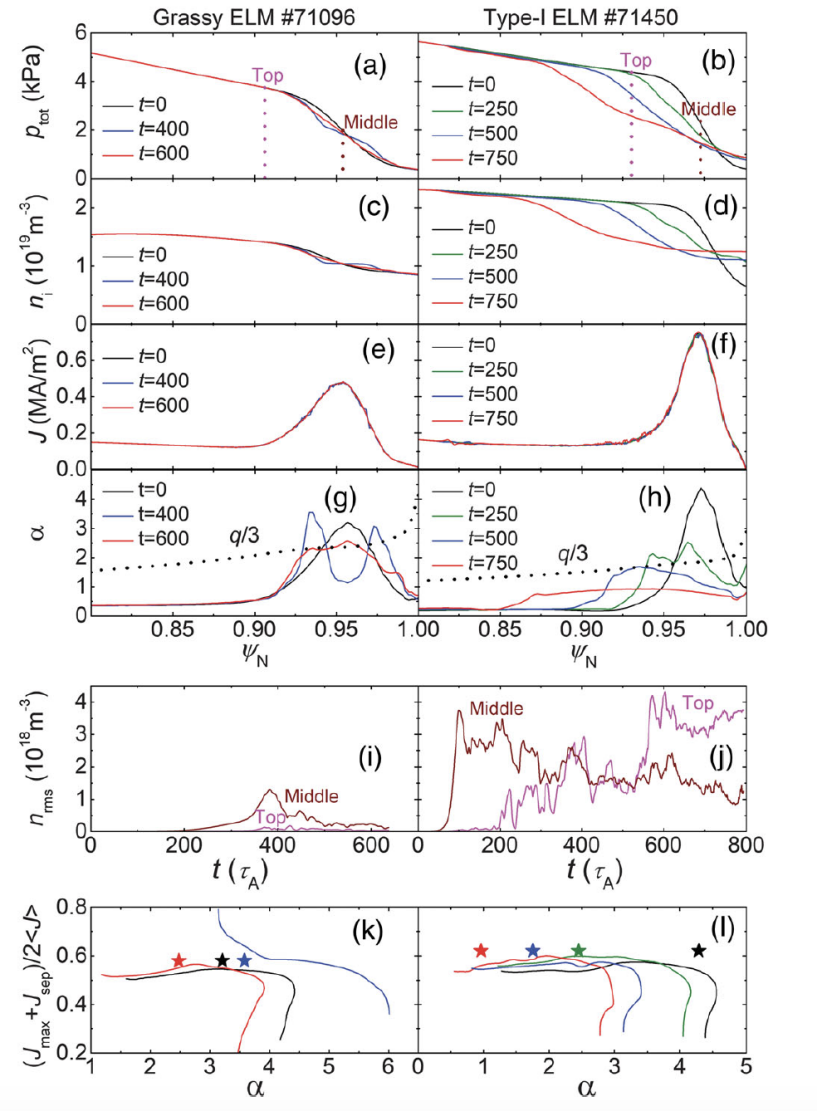
count: [2019-07-12] [Close]
EAST team has achieved a reproducible stationary Grassy ELMy high-confinement regime with intrinsic small Grassy ELMs in their recent experiments on the Experimental Advanced Superconducting Tokamak (or EAST). And they pushed their work further to reveal the formation mechanism of this Grassy ELMy high-confinement regime.
Their work was published in Physical Review Letter.
The Experimental Advanced Superconducting Tokamak (or EAST), projected for a fusion reactor, is a complex and huge machine with a metal wall and low plasma rotation.
Edge Localized Modes (ELMs) are periodic disturbances of the plasma edge pedestal occurring in tokamaks with high confinement (H-mode) plasmas. A large ELM likes a solar flare and occurs routinely with sudden release of a fraction of the pedestal stored energy on short time scales. The high heat fluxes as a result, however, may cause intolerable heat load particularly onto the divertor target plates or first wall in next step devices like ITER.
To tackle the challenge, fusion scientists are trying to find ways to mitigate their effects, either avoiding them by intrinsic small ELM regime with good energy confinements.The Chinese EAST team have made enormous efforts to address the problem.
Through a large number of experiments they conducted on the EAST machine, they realized a reproducible stationary Grassy ELMy high-confinement regime with intrinsic small Grassy ELMs and they further uncovered the formation mechanism behind it.
The team found that this Grassy ELMy high-performance regime was enabled by a wide edge transport barrier with a low density gradient and a high density ratio between the pedestal foot and top. Nonlinear simulations revealed, for the first time, that the underlying mechanism for the observed small ELM crashes was the upper movement of the peeling boundary induced by an initial radially localized collapse in the pedestal, which stopped the growth of instabilities and further collapse of the pedestal.
In addition, the EAST experiments showed that Grassy ELMy regime was compatible with the special requirements of future steady-state fusion reactors e.g. radiation divertor, high density, high bootstrap current fraction, and fully non-inductive drive.
Moreover, the grassy ELMy regime was found to have a strong impurity exhaust ability and was particularly suitable for long-pulse steady-state operation of high performance plasma.
This Grassy ELMy regime provides a potential new solution for solving the transient heat load bottleneck problem of the fusion reactor and realizing the steady state operation of the fusion reactor.
China is now carrying out integrated engineering design of China fusion engineering test reactor, or CFETR, with fusion power of 1GW. The plasma partially normalized parameters of this operation mode are close to the design parameters of CFETR and it is expected to be applied to the steady operation of CFETR in the future.
According to the team, the next goal of EAST is to achieve a steady-state high-confinement plasma operation on a time scale of the ITER baseline H-mode at higher input power. The ELM transient thermal load problem under high input power has become a major obstacle to the realization of this scientific goal. The acquisition of Grassy ELM high-performance steady-state operation mode and the breakthrough in understanding the grassy ELM physics mechanism warrant EAST to achieve even higher power and longer pulse discharge experiments, which in turn lays the physical foundation for the development of the steady state operation mode of ITER and CFETR in a high performance Grassy ELM regime.(YAN Ning reports)
Link to the paper: Promising High-Confinement Regime for Steady-State Fusion

Experimental demonstration of a high-performance steady-state Grassy ELMy H-mode discharge on EAST (Image by the EAST Team)

The movement of the peeling-ballooning instability boundary during the evolution of the pedestal profiles predicted by BOUT++ and ELITE code. (Image by the EAST Team)